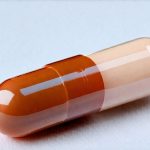Many women experience bothersome bladder symptoms as they age, including urgency (a sudden strong need to urinate), frequency (urinating often), and stress urinary incontinence (leakage with activities like coughing, laughing, or exercise). These issues can significantly impact quality of life, leading to social isolation, anxiety, and limitations in daily activities. While there are various treatment options available, many women hesitate to use medications long-term due to potential side effects, or find that traditional treatments aren’t fully effective for their symptoms. This has led to increased interest in alternative approaches like vaginal estrogen therapy, which is gaining recognition as a potentially helpful option for certain types of bladder problems.
The connection between estrogen and bladder health isn’t immediately obvious, but it’s rooted in the physiological changes that occur during menopause. As estrogen levels decline, the tissues of the urethra and vagina become thinner, drier, and less elastic. This impacts the support structures around the bladder and urethra, potentially contributing to urinary issues. Furthermore, estrogen plays a role in maintaining the health of the bladder lining itself, influencing its ability to stretch and contract properly. Understanding this intricate relationship is key to appreciating how vaginal estrogen therapy can offer relief for many women experiencing these frustrating symptoms.
How Estrogen Impacts Bladder Function
Estrogen isn’t simply a reproductive hormone; it has widespread effects throughout the body, including on the urinary tract. The urethra – the tube that carries urine from the bladder out of the body – contains estrogen receptors. This means the urethra is directly responsive to estrogen levels. When estrogen declines during menopause, these receptors become less stimulated, leading to thinning and weakening of the urethral lining. Similarly, the vaginal tissues lose their elasticity and become drier, impacting pelvic floor support which is vital for bladder control.
This decline in estrogen affects more than just physical structure. It also impacts the microbiome of the vagina and urethra. A healthy microbiome is crucial for protecting against infections that can exacerbate bladder symptoms. Lower estrogen levels can disrupt this delicate balance, making women more susceptible to urinary tract infections (UTIs) and their associated urgency and frequency. Therefore, restoring some level of estrogen in the vaginal area can have a cascading positive effect on overall bladder health.
Importantly, it’s crucial to differentiate between types of urinary incontinence. Vaginal estrogen is most effective for stress urinary incontinence linked to urethral weakness, and urge incontinence stemming from pelvic floor changes or tissue fragility – not necessarily for other causes like neurological issues or a severely weakened pelvic floor that requires dedicated physical therapy. The goal isn’t to replace systemic hormone replacement therapy (HRT), but rather to address localized atrophy in the urogenital area.
Understanding Vaginal Estrogen Formulations
Vaginal estrogen comes in several forms, each with its own advantages and considerations: – Creams: Applied directly into the vagina, typically once daily initially, then tapered down to maintenance doses. They offer a good option for localized treatment but require consistent application. – Vaginal Rings: These small, flexible rings are inserted into the vagina and release a low, continuous dose of estrogen over several months. They’re convenient and require less frequent changes. – Vaginal Tablets/Suppositories: Similar to creams in their targeted delivery, tablets dissolve slowly within the vagina, releasing estrogen directly to tissues. – Estrogen Pessaries: These are solid dosage forms that stay in place longer than tablets or suppositories offering a sustained release of medication.
The appropriate formulation will depend on individual preferences, symptom severity and medical history. It’s vital to discuss these options with your healthcare provider to determine the best fit for you. Dosage is also carefully adjusted based on individual needs and response to treatment, starting low and gradually increasing if necessary. It’s worth noting that vaginal estrogen delivers a very small amount of systemic absorption – significantly less than HRT pills or patches – minimizing risks associated with systemic hormone therapy.
Is it Safe? Addressing Common Concerns
A frequent concern surrounding vaginal estrogen is the risk of cancer, specifically endometrial cancer. However, the low dose delivered by vaginal estrogen formulations results in minimal systemic absorption. This dramatically reduces the risk compared to oral HRT, which has been linked to increased endometrial cancer risk in some studies. Nevertheless, women with a history of estrogen-sensitive cancers (breast or uterine) should discuss this treatment thoroughly with their oncologist before considering it.
Another common concern is potential side effects. While generally well-tolerated, vaginal estrogen can sometimes cause mild side effects like spotting, breast tenderness, or vaginal discomfort. These are typically temporary and resolve on their own. It’s important to report any persistent or severe side effects to your doctor. Furthermore, women with a history of blood clots should discuss this therapy with their provider as some hormone therapies may increase the risk, though risks are minimal with vaginal estrogen.
How to Discuss Vaginal Estrogen with Your Doctor
Initiating a conversation about bladder symptoms and potential treatment options can feel daunting. Here’s how to approach it: 1. Prepare: Jot down your specific symptoms (frequency, urgency, leakage), when they occur, and how they impact your daily life. This provides valuable information for your doctor. 2. Be Direct: Don’t hesitate to bring up the topic of vaginal estrogen therapy specifically. Explain that you’ve researched it as a potential solution and are interested in learning more. 3. Ask Questions: Clarify any concerns you have about safety, side effects, or alternative treatments. A good doctor will be happy to address your questions thoroughly.
Don’t assume your doctor is aware of your symptoms unless you explicitly mention them. Many women feel embarrassed to discuss bladder issues, but open communication is crucial for receiving appropriate care. Your doctor can evaluate your overall health, determine if vaginal estrogen is a suitable option for you, and monitor your progress if you decide to try it. Remember that this isn’t necessarily a “cure-all,” but a valuable tool in managing bothersome bladder symptoms and improving quality of life.
It’s important to remember this information is for general knowledge and informational purposes only, and does not constitute medical advice. It is essential to consult with a qualified healthcare professional for any health concerns or before making any decisions related to your health or treatment.





















